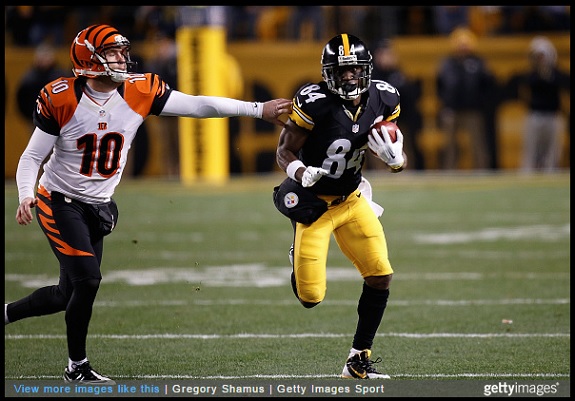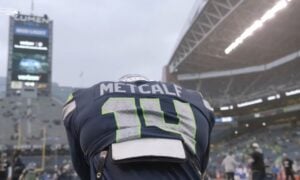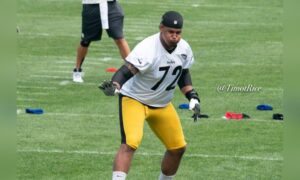On the heels of the conclusion of the 2015 NFL Draft, I began to realize the need to enhance my understanding of each team’s draft history; what they’ve built or attempted to build over the past ten years and how they’ve went about that process.
This may seem tedious to you, the reader, but I think as analysts of a great game, it can be hard to criticize or praise a team without understanding the full context of how their roster and positional depth has been constructed. For example, the New York Jets and the Buffalo Bills are often ridiculed heavily for their drafting incompetence at the quarterback position, but while often grouped together, a review of their past 16 classes suggest two vastly different front office mindsets. The Jets have spent an incredible 12 picks on quarterbacks (by far the most in the AFC), while the Bills have used just four selections on signal callers over the same time period. So two teams that have had similar results at the quarterback position since 2000, but have attempted to address those issues in vastly different ways.
Similar comparisons can be made in the AFC North, a process which we began to endeavor upon with an examination of each team’s offensive and defensive draft classes over the past ten years. Today we will look at all four team’s selections from 2006-2015 at wide receiver, before moving on to the tight end position tomorrow.
Wide Receivers
Cincinnati Bengals: 15
Pittsburgh Steelers: 12
Baltimore Ravens: 12
Cleveland Browns: 9
While the Bengals have certainly invested heavily in wide receivers in the draft, the above number can be a bit misleading. Of the 15 wide receivers drafted in the past ten years by the team, only five were in rounds 1-3, with only one first round and one second round selection. The Bengals love taking late round fliers on receiver prospects, with a whopping nine 6th-7th round selections at the position since 2006 (one 5th rounder too). Marvin Jones and Mohamed Sanu have shown flashes, but outside of 2011 4th overall pick A.J. Green, the Bengals have very little to show for their plethora of additions at wide receiver. The team added another 7th rounder a month ago in WVU speedster Mario Alford, whose vertical ability will hopefully help open things up for Green in the passing game.
It is not a secret that the Steelers love their wide receivers, and with good reason; few teams develop talent better at the position. Pittsburgh has done a masterful job maximizing the abilities of playmakers like Santonio Holmes, Mike Wallace, Antonio Brown, and most recently Martavis Bryant (and hopefully Markus Wheaton). The team has been able to find value in the mid-late rounds without using high-end selections at the position, as talents like Brown (6th), Wallace (3rd), Wheaton, (3rd), Bryant (4th), and Emmanuel Sanders (3rd) all were ideal selections where Pittsburgh nabbed them. There have been misses like Willie Reid and, most notably, the oft-hated Limas Sweed, but for the most part Pittsburgh has been heralded as one of the premiere franchises when it comes to finding quality wide receivers that can produce in the Steelers offense.
Of the Ravens 12 drafted wide receivers in the past ten years, just three have been taken in the draft’s first three rounds (one in each round), which is another great indication of how these overall numbers can be misleading. Before drafting Breshad Perriman in the first round this year, Baltimore had used just two 2nd-3rd picks to address wide receiver over the past ten years, and zero first round selections. That means the Ravens spent nine 4th-7th round picks at the position since 2006, looking for band-aids rather than cure-alls in the passing game. The result has been largely uneven play from their receiving corps over the years, especially from the team’s draftees.
Torrey Smith (2nd) was effective, but never quite lived up to expectations before moving on to San Francisco this offseason. Yamon Figurs (3rd), Demetrius Williams (4th), Tandon Doss (4th), Marcus Smith (4th), and David Reed (5th), all failed to make an impact in the NFL, a trend that we find even more frequently in Baltimore when we backtrack to the team’s pre-2006 draft classes. Other high-mid round picks at the position such as Mark Clayton (1st), Devard Darling (3rd), Ron Johnson (4th), Travis Taylor (1st), Patrick Johnson (2nd), and Brandon Stokley (4th, good career but did next to nothing in Baltimore), display the team’s long-term woes at finding receiver talent in the draft. As much as Ozzie Newsome is heralded for his drafting prowess (and rightfully so), the organization’s efforts to find wide receiver talent over the years has been nothing short of disastrous. That doesn’t bode favorably for Perriman or Darren Waller heading into their rookie campaigns, but having a reliable quarterback at the helm should help quite a bit.
Few NFL teams have displayed more disdain for the wide receiver position with their drafting strategies than Cleveland, with just nine wideouts selected in ten draft classes, including zero first rounders. In fact, in the past four drafts the Browns have only picked up two wide receivers in Vince Mayle (4th, 2015) and Travis Benjamin (4th, 2012). Granted Josh Gordon was a solid supplemental draft pick for a year or two, but the last time the Browns spent a pick higher than a 4th rounder on a wide receiver was in 2011, when the team drafted Greg Little in the second (and we all know how that has gone).
Of Cleveland’s three second round selections since 2006, Little, Brian Robiskie, and Mohamed Massaquoi have all been busts as the NFL level, while the team’s lone third rounder (Travis Wilson, 2006) managed only two receptions in his one year in the league. The Browns are not quite as bad as the Ravens when looking at their pre-2006 work at the position, but drafting wide receivers has definitely not been a successful endeavor for Cleveland over the years. With Gordon’s continued off-the-field problems, the team could be slated for another difficult year at the position.








